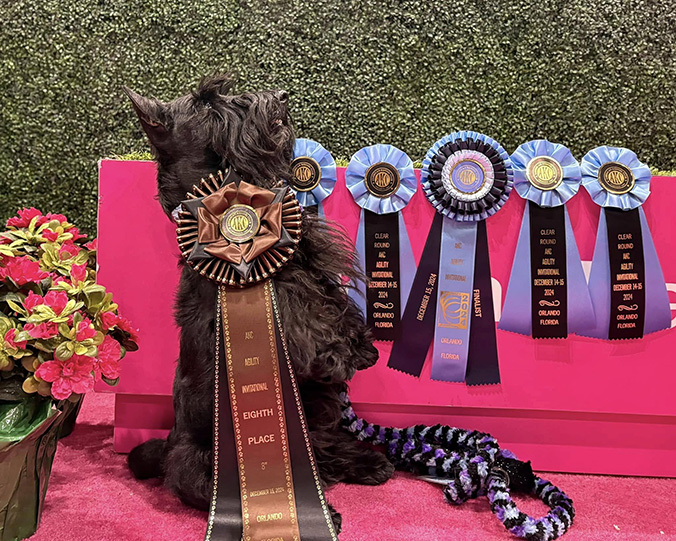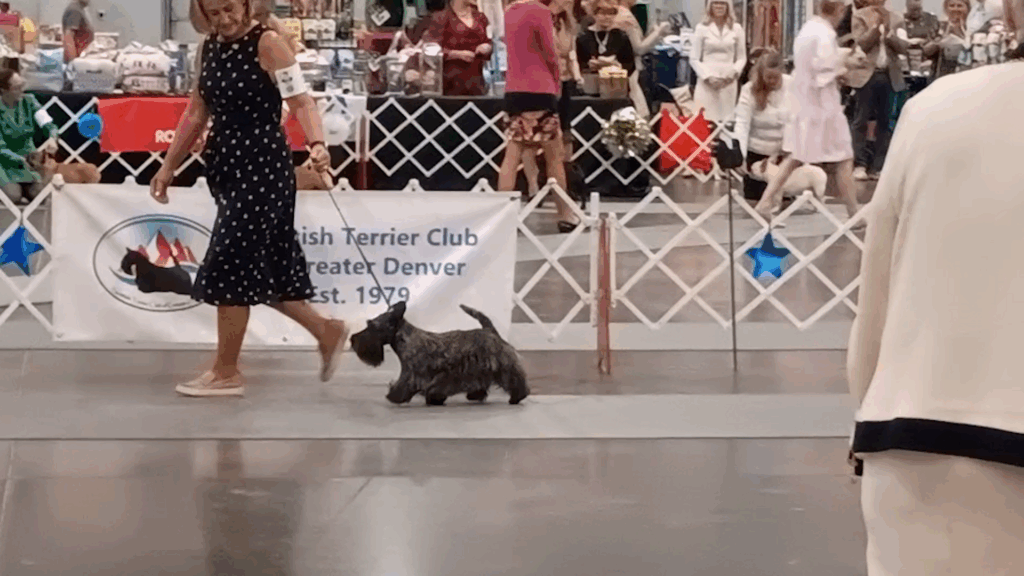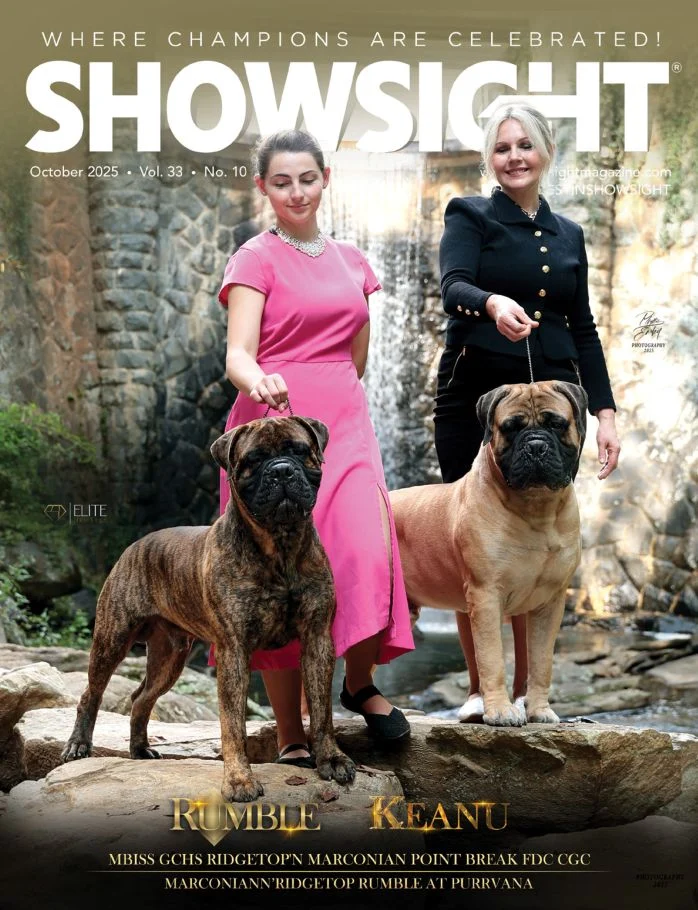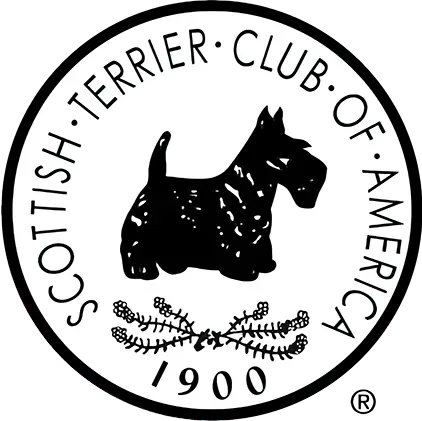Form follows function
While a dog show may look like a beauty pageant, it’s not: Your scottie is not being compared to other dogs in his class; he’s being measured by how closely he conforms to the standard of our breed. Why? Because form follows function, and because the closer your scottie’s appearance is to the breed standard, the better his ability will be to produce the next generation of champions.
The handler’s job is to present the dog to its best advantage. Although easy to learn the basics, it does require time to learn how to show a dog well. In addition, since the Scottish Terrier is a groomed dog, one needs to acquire the skill to produce a well-groomed dog.

Judging a Scottie
Audience View
Show Handling

A typical ring appearance consists of:
- stacking the dog: to show the overall appearance and silhouette of the dog to the judge
- walking the dog around the ring: to show the side view of the dog’s gait, displaying the drive, reach, and form
- tabling the dog: stacking the dog on the table for the judge to go over the dog; touching the dog to feel the structure of the dog; examining its bite and coat texture
- a second gaiting of the dog to examine the gait from the front and rear
- sparring
- re-examination of the dog on the table or re-gaiting the dog
- final walk around
Sparring is a technique seen most commonly in the Terrier ring whereby judges observe dogs’ reactions to other dogs. The most common form is where a judge will call two dogs to the center of the ring, or away from the other dogs in the lineup, and have them face each other, with handlers keeping control of the dogs. This is done to see which dog will act more dominant. Depending on all other qualities that the judge has observed in each dog, this sparring behavior can help the judge make the final decision on placing those two dogs.
Done properly, with properly trained dogs, a pair of terriers sparring is a lovely sight indeed. Both dogs will march proudly towards each other, muscles taut, heads held high, eyes flashing at one another, clearly stating to each other that they are the top dog, they are the best of the best. Toplines will straighten and level, necks will arch, ears will nearly touch in the middle of the top skull. At this point in time the two dogs are showing themselves to their best advantage, trying to display beyond doubt that they are the superior specimen, and most worthy to pass on their genes to the next generation. It is up to the judge to properly read and balance this aspect of terrier temperament and make the human show placement that encourages breeders to follow through and make sure those genes get passed on!
There are different levels of competition. The American Kennel Club (AKC) is the parent organization to the STCA. The AKC awards various awards in conformation including AKC championship and grand championship.
In addition, there is competition called specializing. The finished champions compete over the course of a year to defeat the most dogs. This often involves lots of dog shows, lots of travelling for the dogs and handlers.
Conformation competition is run by many organizations other than AKC.
Conformation competition is available in many countries around the world. Each country has different rules on what determines whether a dog has reached the championship level. Many owners and their dogs compete and complete championships titles on their dogs in other countries.
In addition, the STCA has a series of competitions based on dogs winning various classes, number of Best of Breed, etc. These tallies are presented at the annual STCA dinner and represent the overall performance of the members’ dogs over the course of the year.
The dog community also tracks the number of breed wins and number of Scotties defeated, group placements, Best-in-Show(BIS), and number of all dogs defeated during a calendar year. This leads to top 25 placements for Scottie dogs and bitches, overall Scotties, all terriers, and all breed competition. This is tracked in various dog magazines such as Showsight.

Working with a litter is like a mini class ring. You need to examine them individually and as a group. The individual judging is generally restricted to a tabling of the dog — looking at the basic features. The group interaction often centers on how they react to one and another. Take away the mother and any other dogs. An assertive dog will generally like working on its own. It might explore while the others are sitting together.
After a while bring back the mother and see how they interact. If the mother is being playful, your good puppies will attempt to follow her lead. If she gets rough, they should respond in kind — stacking themselves, squaring up to the mother, even barking at her. Be aware that as the puppies develop, they go through stages where they are growing disproportionately. Sometimes, they are too tall or too long, when last week they looked great. You just have to wait out the changes to see how they come back together.
